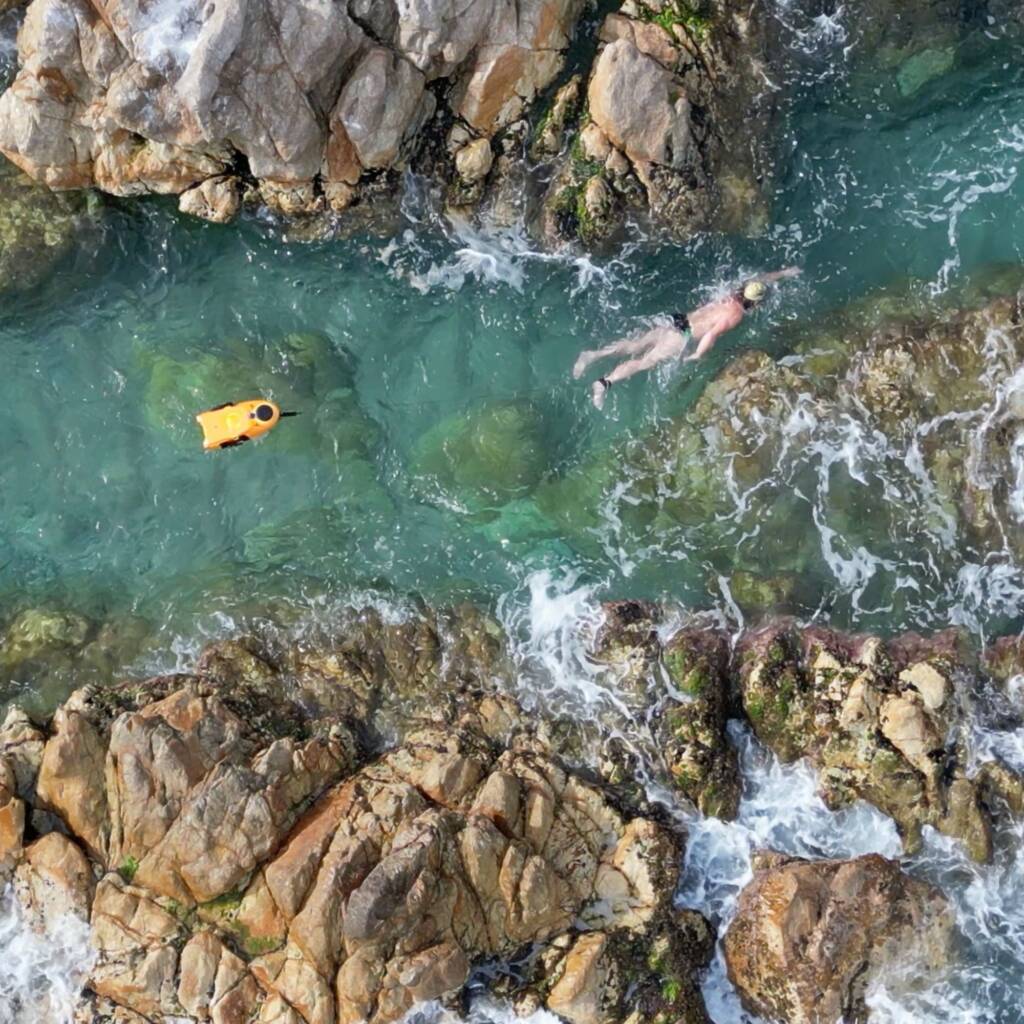Description
Target Audience: Aimed at all those who, being or considering themselves swimmers with a certain level of proficiency in the pool, are attracted to open waters but have not yet dared or had the opportunity to take the plunge and yearn to enjoy them.
Description: A group outing to the beach and sea, and familiarization with open waters through adaptation exercises to prevailing conditions, both individually and in groups, basic orientation, and safety. To ensure a progressive adaptation and avoid seasickness, the waters for this workshop should preferably be clear, with sea conditions ranging from calm to light swell, and easily accessible beaches will be chosen.
Schedule: March to December (cold months with wetsuits)
Duration: 4 hours
Capacity: 8
Price: 35 €
Location: Beach or cove with easy access to the water
Materials: Swimsuit, cap, swimming or diving goggles, optional fins.
Structure:
- Welcome
- What will we do? (Duration, parts)
- Introductions (participants and James. Keep it brief)
- Concept
- Safety
- Understanding the environment as a source of tranquility (land and sea)
- Topography: shape and material of the seabed, depths, entry and exit points to the water, distances, visual references.
- Water: currents, temperature, transparency, waves, cleanliness.
- Biology: jellyfish, fish, organisms, vegetation.
- Hazards: boats, fishermen, rocks, currents.
- Self-awareness
- Physical condition (How far can I swim? Do I get seasick? Do I get cold? Do I get cramps?)
- Psychology (Am I relaxed in the sea? Do I have fears?)
- Materials
- Knowledge of specific open water materials (Goggles, neoprene caps, fins, wetsuits, paddles, GPS, Vaseline, buoys)
- Method
- Adaptation to open water swimming
- Comfort in breath-holding (immersions, exhaling, time, upright and inverted)
- Adaptation to waves (stroke exercises, bilateral breathing)
- Orientation (buoys, land references, wind, seabed)
- Currents (identification, assessment, compensation, effect on outbound and return trips)
- Use of wetsuits (buoyancy, friction, flexibility, lubrication)
- Use of GPS (operation, apps, analysis, conclusions)
- Long swims and Freeswimming (planning, risks, tools, free sight)
- Ecoswimming
- Adaptation to open water swimming
- Conclusions
- What’s next?
- Continuity of adaptation to open waters
- Individual or group outings (how to find open water groups in Lloret, Calella, etc., on Facebook, Instagram, the internet. Create a preliminary list with the help of Pierre, Sunyer, myself…)
- Other Integral Rewilding workshops
- Final fellowship breakfast at a nearby collaborating beach bar



